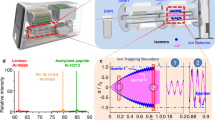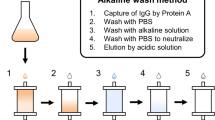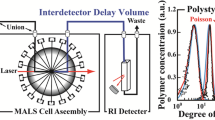Abstract
IN connexion with the chromatographic separation of alkaloids of Chelidonium maius L.1, I found alkaloids giving rather big spots with a tendency to form tails. This is connected, among other things, with the dissociation constant (K B), the value of which influences the course of the chromatographic process, organic electrolytes having different values of K B in the water phase and the organic phase of dissociation.
This is a preview of subscription content, access via your institution
Access options
Subscribe to this journal
Receive 51 print issues and online access
$199.00 per year
only $3.90 per issue
Buy this article
- Purchase on Springer Link
- Instant access to full article PDF
Prices may be subject to local taxes which are calculated during checkout
Similar content being viewed by others
References
Debska, W., Materialy Zjazdu Farmaceutycznego, 1 (1958).
Britton, H. T. S., “Wodorodnyje jony” (translation of “Hydrogen Ions”) (Leningrad, 1936).
Waksmundzki, A., Ościk, J., and Frelek, Z., Annales U.M.C.S., 9, 83 (1954).
Waksmundzki, A., and Soczewiñski, E., Chemia analityczna, 2, 459 (1957).
Waksmundzki, A., and Soczewiñski, E., Materialy Konferencji Analitycznej (in the press).
Author information
Authors and Affiliations
Rights and permissions
About this article
Cite this article
DEBSKA, W. Separation and Determination of the Dissociation Constants of Chelidonine and Protopine by Paper Chromatography. Nature 182, 666–667 (1958). https://doi.org/10.1038/182666a0
Issue Date:
DOI: https://doi.org/10.1038/182666a0
This article is cited by
Comments
By submitting a comment you agree to abide by our Terms and Community Guidelines. If you find something abusive or that does not comply with our terms or guidelines please flag it as inappropriate.



